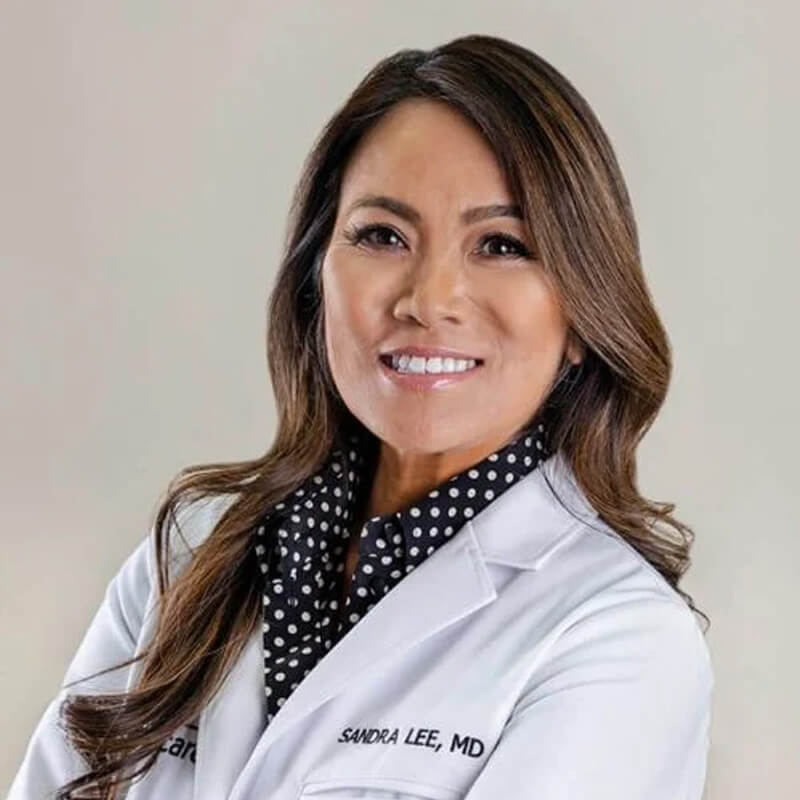 Dr. Sandra Lee, host of the popular reality TV series “Dr. Pimple Popper,” discussed her approach and experiences treating rhinophyma — a form of rosacea that results in thickened skin and enlargement of the nose from excess tissue — at the 2025 American Academy of Dermatology annual meeting in Orlando in March. One of the misconceptions she addressed is that this disfiguring form of rosacea only occurs in white men.
Dr. Sandra Lee, host of the popular reality TV series “Dr. Pimple Popper,” discussed her approach and experiences treating rhinophyma — a form of rosacea that results in thickened skin and enlargement of the nose from excess tissue — at the 2025 American Academy of Dermatology annual meeting in Orlando in March. One of the misconceptions she addressed is that this disfiguring form of rosacea only occurs in white men.
“A lot of patients with rhinophyma are of Celtic origin, but I also see patients that are Hispanic or Asian, so I do treat darker skin types,” Dr. Lee said. “I treat both men and women. There are definitely women who complain about this condition and are really happy to be treated.”
She explained that her preferred method for removing the excess tissue of rhinophyma and reshaping the nose is loop electrocautery, a technique that employs heat from an electrical current to cut through tissue. She said she prefers it because it results in less blood loss, compared to dermabrasion or laser surgery, and heals quickly.
“Something that I think is important is that we under-promise and hope to over-deliver,” Dr. Lee said. “I think that’s really critical with rhinophyma cases. When I come in and see a patient with a significant case, I make sure to tell them, this may take a couple treatments. I could do it in one but I’d rather be able to get them back to see how it heals and then do touch up, because I want them to be happy with the results.”
Her advice for physicians is to ask patients to bring in photos of themselves before the rhinophyma developed to get a sense of how the patient’s nose should be shaped, and to be conservative with tissue removal at first.
“I’m not really aggressive in the beginning,” she explained. “I like to draw on the skin to make sure I understand what I’m going to remove, because there’s distortion and swelling there when you numb. I make sure that I treat less, knowing that after treatment patients will think their nose looks the same. And I make sure they know that’s because there’s so much swelling from the numbing. I usually wait about six weeks for the procedure to fully heal, and then I do a little refining of the shape afterwards.”
Dr. Lee said the simplest cases to treat are what she calls “bubblegum rhinophyma,” because it can look as if someone just took a big piece of gum and slapped it on their nose.
“That’s pretty easy to remove, because it’s not that big of an area, you can still see the shape of the nose,” she said. Women tend to have more of a fullness on the tip of the nose that can be reshaped. “The cases I find challenging are the ones where there’s just a big blob on the face, because you don’t know what the shape of the nose is.”
In these cases the nostrils may be distorted or blocked, and breathing can be obstructed. However, these more substantial reconstructions often have the greatest impact on the patient.
“For a lot of my staff, this is one of their favorite procedures,” she said. “They see how rewarding it is and how gratified patients are, and they love to be involved.”
Dr. Lee recommends that patients suffering from rhinophyma shouldn’t wait to be evaluated, in particular because there are serious conditions, such as skin cancer, that can cause skin thickening and tissue growth.
She also noted that she has yet to see rhinophyma redevelop after surgery and with ongoing medical therapy to address the underlying disease. In cases where a patient still has the inflammatory element or bumps and pimples of active rosacea, she often prescribes low-dose isotretinoin to help control the inflammation.